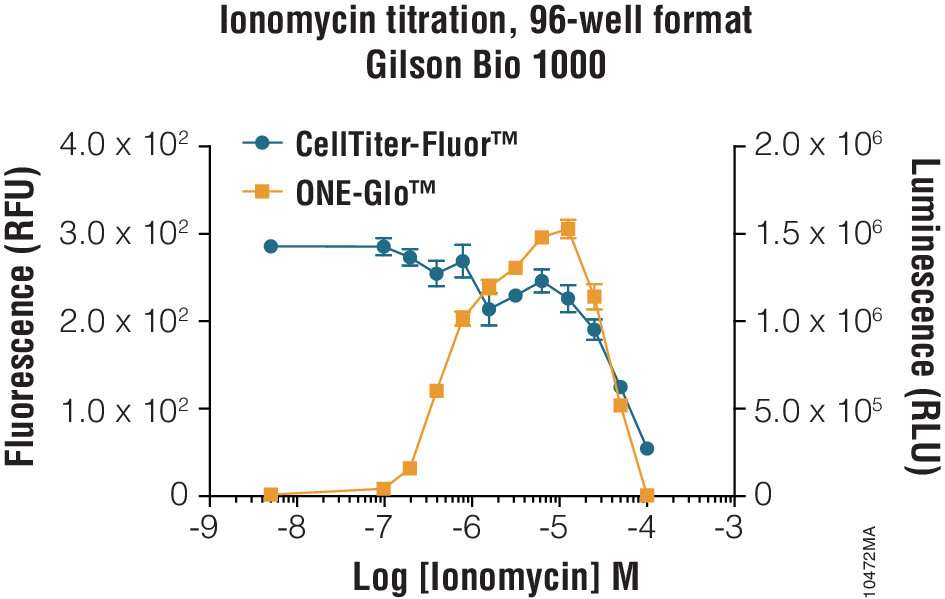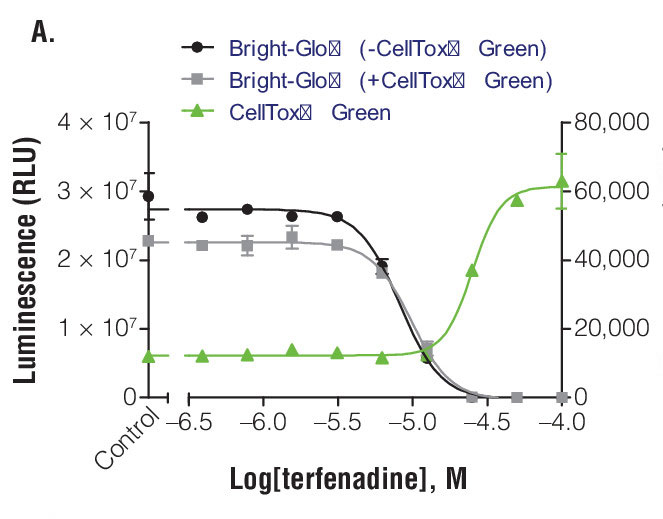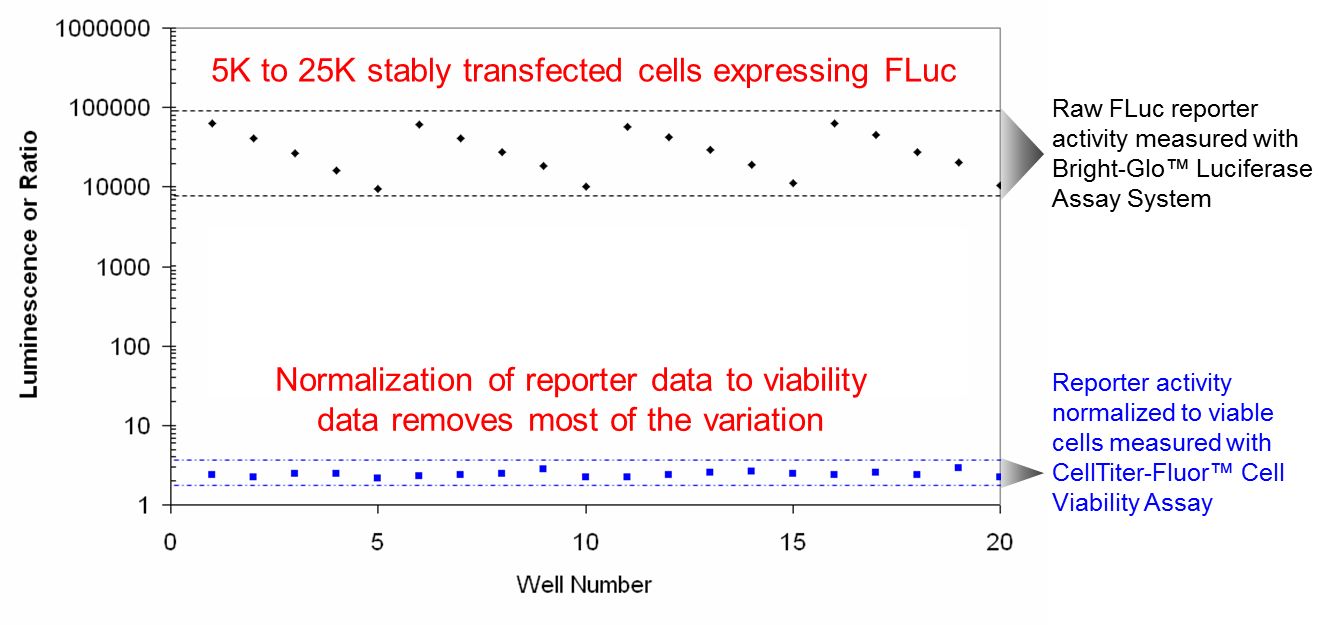Reporter assays using a single reporter, be it from a stable cell line or transient transfection, can benefit from normalization. Obviously, we are not talking about adding a second control reporter but normalizing to the number of live or dead cells in the well. Two cell health assays, CellTiter-Fluor™ Cell Viability Assay and CellTox™ Green Cytotoxicity Assay, are ideally suited for multiplexing with reporter assays.
CellTiter-Fluor™ Assay is a non-lytic, non-toxic assay that is easily added upstream of the lytic reporter assay to gain a measure of viable cells. CytoTox™ Green Assay is exceptionally useful monitoring assay as it, too, is non-lytic, non-toxic assay that can be added when you plate or treat the cells allowing monitoring of toxicity at any time you choose. Alternatively, CellTox™ Green can be added just prior to the reporter assay to look for cell death.
Account for Variations in Cells/Well – When manually dispensing cells into 96- or 384-well plates, there is always a risk of adding too few or too many cells per well. Changes in the number of cells per well could lead to false interpretation of data. Multiplexing a cell viability assay with the reporter assay can alleviate these errors. Essentially, buy gaining a measure of viability, you can divide the reporter data by the viability data to the reporter activity per viable cell. Below is an artificial and extreme example of how normalizing to viable cells can help eliminate variation in your reporter data:
Account for Changes in Cell Health –
When treating cells with compounds and monitoring gene expression, compound-dependent cytotoxicity may make interpretation of the expression data difficult. Was that decrease in reporter activity due to down-regulation of the promoter or cytotoxicity? Again, multiplexing either a viability or cytotoxicity assay can make data interpretation easier. In the example below, the combination of PMA and ionomycin cause an increase in NFAT-responsive expression to a point where the toxicity of ionomycin causes the decrease in reporter activity.


Non-lytic, non-toxic cell viability and cytotoxicity assay can easily be added upstream of single reporter assays to account for changes in cells per well and cell health to help you understand your reporter data. CellTiter-Fluor™ Cell Viability Assay and CellTox™ Green are especially designed and suited for such applications.
References:
Article: Optimize Transfection of Cultured Cells
Article: Making Sense of Your Genetic Reporter Data through Multiplexing

